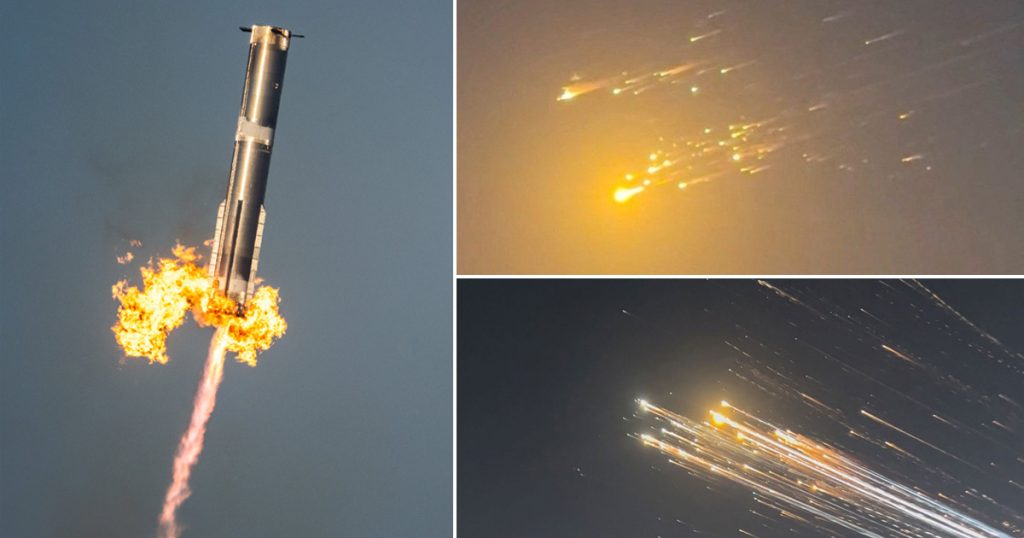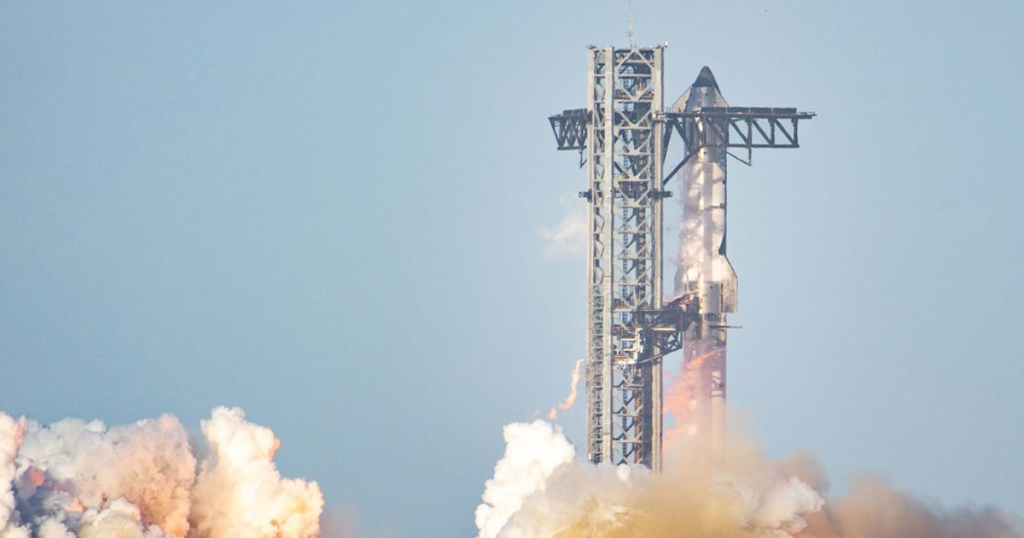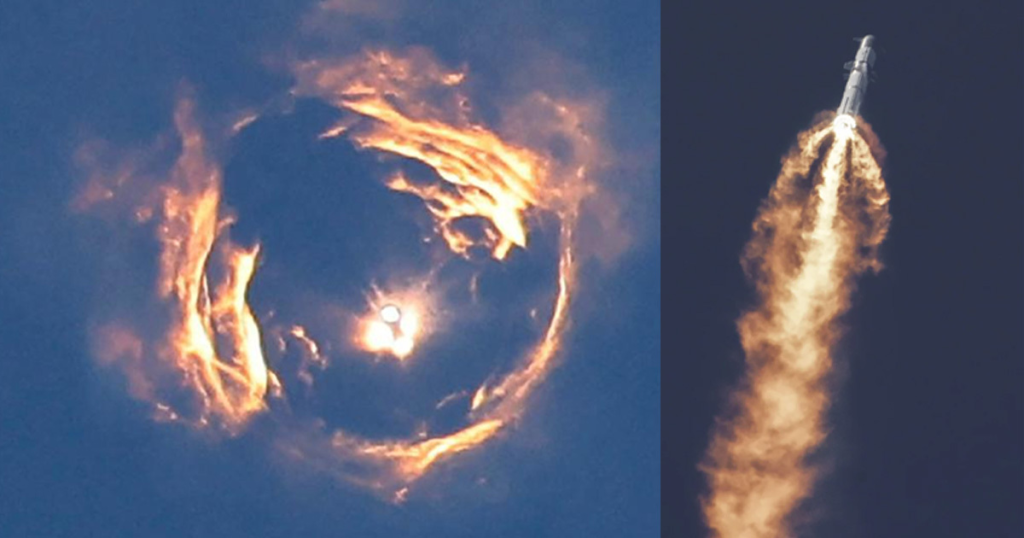
In This Article
- About SpaceX by Elon Musk
- SpaceX Thursday Failure
- Air Travel and Regulatory Response on Starship Failure
On Thursday, Elon Musk’s SpaceX again lost its upper stage of the rocket, and this is the second consecutive failure this year. This has raised doubts about the ship’s performance and reliability. This project is facing multiple challenges during the test flights, such as partial or full explosions. SpaceX is presenting the improvements after every iteration, but this time, the failure was similar to the previous attempt’s results.
About SpaceX by Elon Musk
SpaceX is the project of Elon Musk, creating the most powerful rocket ever made in mankind’s history. It is considered the interplanetary travel department designed and devoted to humans’ travel from Earth to Mars and beyond. This is empowered by the fully reusable two-stage system:
- Super Heavy booster
- Starship upper stage
The news we have been discussing so far is from the starship upper stage facing the challenges of the successful projects. Till now, Starship has been showing rapid progress in every attempt; therefore, it has gained the confidence of the government for the funding and other processes.

Elon Musk has the formula “fail fast, learn fast,” and the current failure will undoubtably allow the engineers and workers to work better for future attempts.
SpaceX Thursday Failure
On March 6, 2025, Elon has sent another space vehicle to SpaceX’s Boca Chica, Texas facility. According to the resources, the launch started at 5:30:31 PM CST (23:30:31 UTC) but was soon failed and exploded into the air. The reason behind this explosion is the booster’s boostback tower that was recorded as the video through the mechanical arms of the tower.
The vehicle was designed to ship 34, and the mission was to develop fully reusable spacecraft for interplanatory travel in space. During its flights, the Super Heavy boosters (Booster 15) were propelled into the ascent phase. Till then, things were doing well, but in the next phase, the booster was burned, and this was the main reason behind this disaster.

At the time of the explosion, Starship was a 232-foot (71-meter) Super Heavy rocket booster. The accident happened just 20 seconds before completing the scent-burn phase.
The flight was in the air for approximately eight minutes, but throughout this time, the upper stage of Starship faced critical issues. After this, the spacecraft faced the continuous shutdown of the engines, so the spacecraft lost control and spun in the air.
Dan Huot, the SpaceX communications manager, discussed the matter in the live stream saying:
Once you lose enough of those center engines, you’re going to lose attitude control. And so we did see the ship start to go into a spin, and at this point, we have lost contact with the ship.
At T+9:35, the communication with the spacecraft was discontinued, and the spacecraft was disintegrated over the whole Atlantic Ocean. According to multiple reports, the region includes Florida, Jamaica, and the Turks and Caicos Islands that received the debris from the Starship.
Air Travel and Regulatory Response on Starship Failure
The issue of the debris falling around multiple regions has promptly activated the Federal Aviation Administration (FAA). It has activated two programs, that are the Debris Response Area and also temporarily ground the flights in the red areas. Moreover, it has taken the investigation into the incident to know the reason behind this loss.

The swift regulatory actions underscore the significance of air safety with the advancement in the aircraft and space projects. The aim of the FAA is to maintain the balance between innovations and public safety.
Looking ahead in the future, the latest technologies, like artificial intelligence, are playing a ground-breaking role in safety and innovations. The predictive analysis and machine learning algorithms enhance the safety and success of such projects. Similarly, AI is helping platforms like Weborik Hub to make their client’s websites smooth, fast, safe, and growing.
Before this, on January 16, the Starship’s seventh test flights failed in the same manner as we have been discussing before. That flight lasted for 10 minutes after its liftoff time. This time, the Starship showed a better performance. Musk seems to be confident about the next projects and flights and is learning from his failures and experiences.



